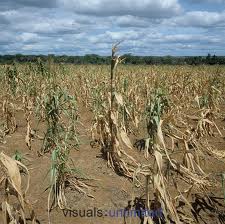|
Obscure polar volcanoes
can have very expensive consequences.
 The
volcanic debris from several Russian volcanoes has weakened the Arctic
Oscillation making it negative. This has allowed the polar air mass to
surge south and push the cold and wet impact of the strong Pacific La Niña
further south than usual in North America. The
volcanic debris from several Russian volcanoes has weakened the Arctic
Oscillation making it negative. This has allowed the polar air mass to
surge south and push the cold and wet impact of the strong Pacific La Niña
further south than usual in North America.
In April 2010, an
obscure Icelandic volcano, Eyjafjallajökull, completely disrupted European
air traffic patterns. At its peak, the troublesome cloud of volcanic
debris stretched from Canada to Russia and its impact was felt worldwide.
In December 2010,
obscure volcanoes on Russia's Kamchatka Peninsula, totally disrupted North
Hemispheric weather and air traffic patterns. Icy weather plunged deep
into the Northern Hemisphere, from the US and Canada through Europe and
Asia. (In the process, it chilled the UN Climate Change Conference in
tropical Mexico.) California's Mammoth Mountain was buried in 9 to 13.5
feet (2.7 - 4.1 meters) of snow while New York was buried in 2 feet (60
cm) of snow. Twice
Florida
crops were hit with freezing temperatures. This record-breaking weather
will affect global crop production and food prices.
Obscure polar volcanoes can have very expensive consequences.
A La Winter
The cooling effect of
the Russian volcanos was enhanced by the current La Niña. This year's La
Niña began early this summer and has been warping global weather patterns
for the past six months. In summertime, this meant hotter weather .In
winter it creates colder and stormier conditions.
La Niñas occur when
unusually strong tropical Trade Winds blow the sun-warmed surface waters
of the Pacific toward the west. As a result, the western Pacific is warmer than average and the central and
eastern regions are cooler. When the central and eastern waters are more
than 0.5°C (0.9°F) cooler than normal, the phenomenon is officially
declared a La Niña. As the event continues, the cool water expands north
and south along the western coastlines of North and South America.
a result, the western Pacific is warmer than average and the central and
eastern regions are cooler. When the central and eastern waters are more
than 0.5°C (0.9°F) cooler than normal, the phenomenon is officially
declared a La Niña. As the event continues, the cool water expands north
and south along the western coastlines of North and South America.
The current La Niña is
a powerful phenomenon. The water temperatures are 1.4° - 1.6°C (2.5° -
2.9°F) cooler than normal with some areas more than 2°C (3.6°F) colder.
These cool waters stretch from
Alaska's Aleutian
Islands to the southernmost tip of South America. NOAA's most conservative
estimate is that these cool waters will remain in place for the rest of
this winter.
Part of the reason this
event is so strong is that the Pacific has entered the negative phase of
the decades -long Pacific Decadal Oscillation. This ocean-wide event
exaggerates the tropical cooling in the east and warming in the west.
> back to newsletters
Goldonomic, Florida, USA -
 +1
(772)-905-2491
+1
(772)-905-2491 |